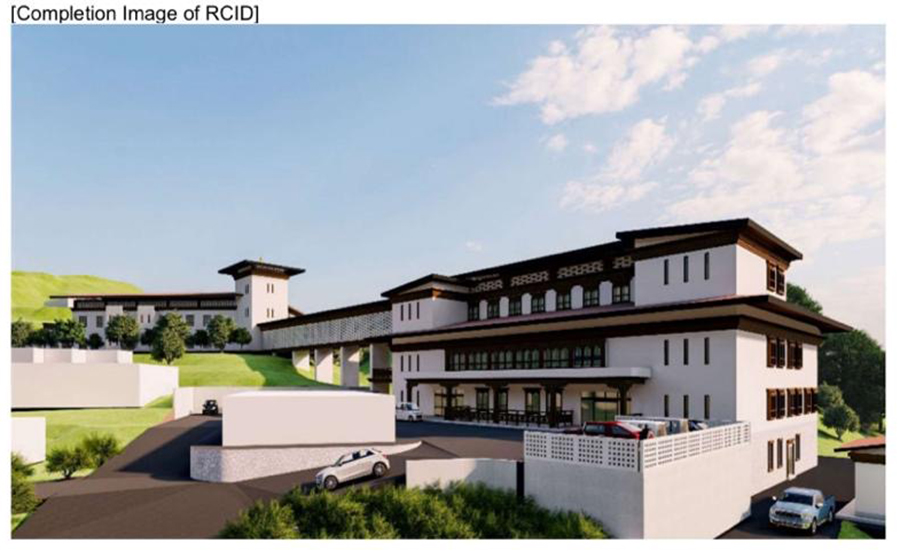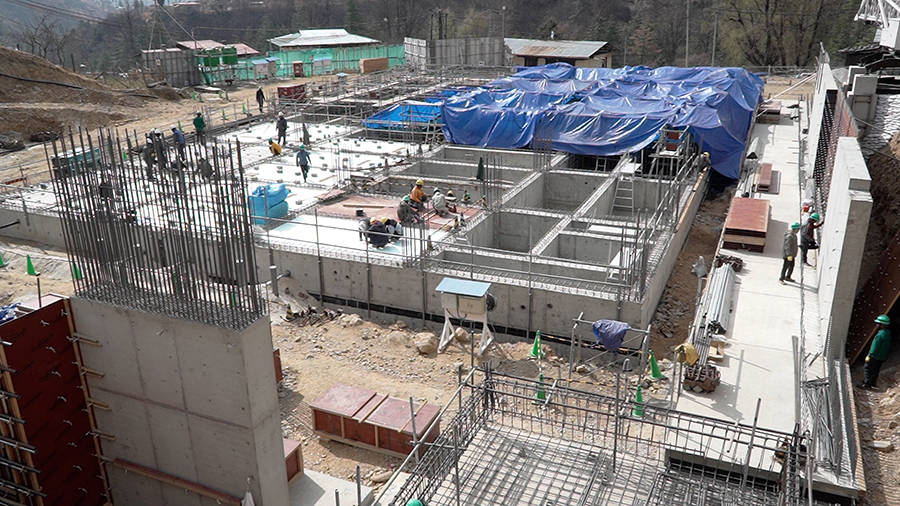 The construction of the Royal Centre for Infectious Diseases at Gidakom in Thimphu is on track as scheduled. The Health Minister and the Chief Representative of the Japan International Cooperation Agency (JICA) visited the site, yesterday. For now, more than 15 per cent of the construction work has been completed. Supported by the Government of Japan through JICA, the centre aims to enhance healthcare infrastructure, particularly for managing infectious diseases.
The construction of the Royal Centre for Infectious Diseases at Gidakom in Thimphu is on track as scheduled. The Health Minister and the Chief Representative of the Japan International Cooperation Agency (JICA) visited the site, yesterday. For now, more than 15 per cent of the construction work has been completed. Supported by the Government of Japan through JICA, the centre aims to enhance healthcare infrastructure, particularly for managing infectious diseases.
 Construction of the centre began in late September last year and is being carried out by a Japanese firm, Dai Nippon Construction.
Construction of the centre began in late September last year and is being carried out by a Japanese firm, Dai Nippon Construction.
The centre, designed as a specialised facility, will feature state-of-the-art equipment and advanced clinical capabilities for handling both routine and emergency infectious disease outbreaks.
The facility will include wards, administrative offices, and outpatient, diagnosis and training departments. The centre will also have quarantine facilities for emergency outbreaks.
 For now, the construction of the foundation and retaining walls is nearing completion. According to the project manager, the structural work is scheduled to start from April till September this year, followed by finishing works.
For now, the construction of the foundation and retaining walls is nearing completion. According to the project manager, the structural work is scheduled to start from April till September this year, followed by finishing works.
Takeharu Kakeya, Project Manager for RCID Construction said “May to September is the rainy season in Bhutan, and we are concerned about potential delays. We aim to complete the foundational or soil works before April so that structural work can begin without interruption during the rainy season.”
According to JICA, the total cost of the project is approximately two billion ngultrum or 3.75 billion Japanese Yen, the largest grant aid initiative in JICA’s history of cooperation with Bhutan.
Kimata, Chief Representative of JICA Bhutan Office said “The project was initiated in response to the lessons learned from the COVID-19 pandemic. With this centre, even if Bhutan faces another infectious disease outbreak, I believe the government will be well-prepared to manage it effectively.”
The health minister said that the construction is very timely and that the high standard of construction could set a benchmark for future projects in the country.
He said it would also serve as a research centre for infectious diseases, further contributing to health sector development.
Over 100 Bhutanese workers, along with around 150 Indian workers, 25 Filipinos, and four Japanese are involved in the construction.
Construction is expected to be completed by May next year.
Namgay Dema
Edited by Tshering Zam









